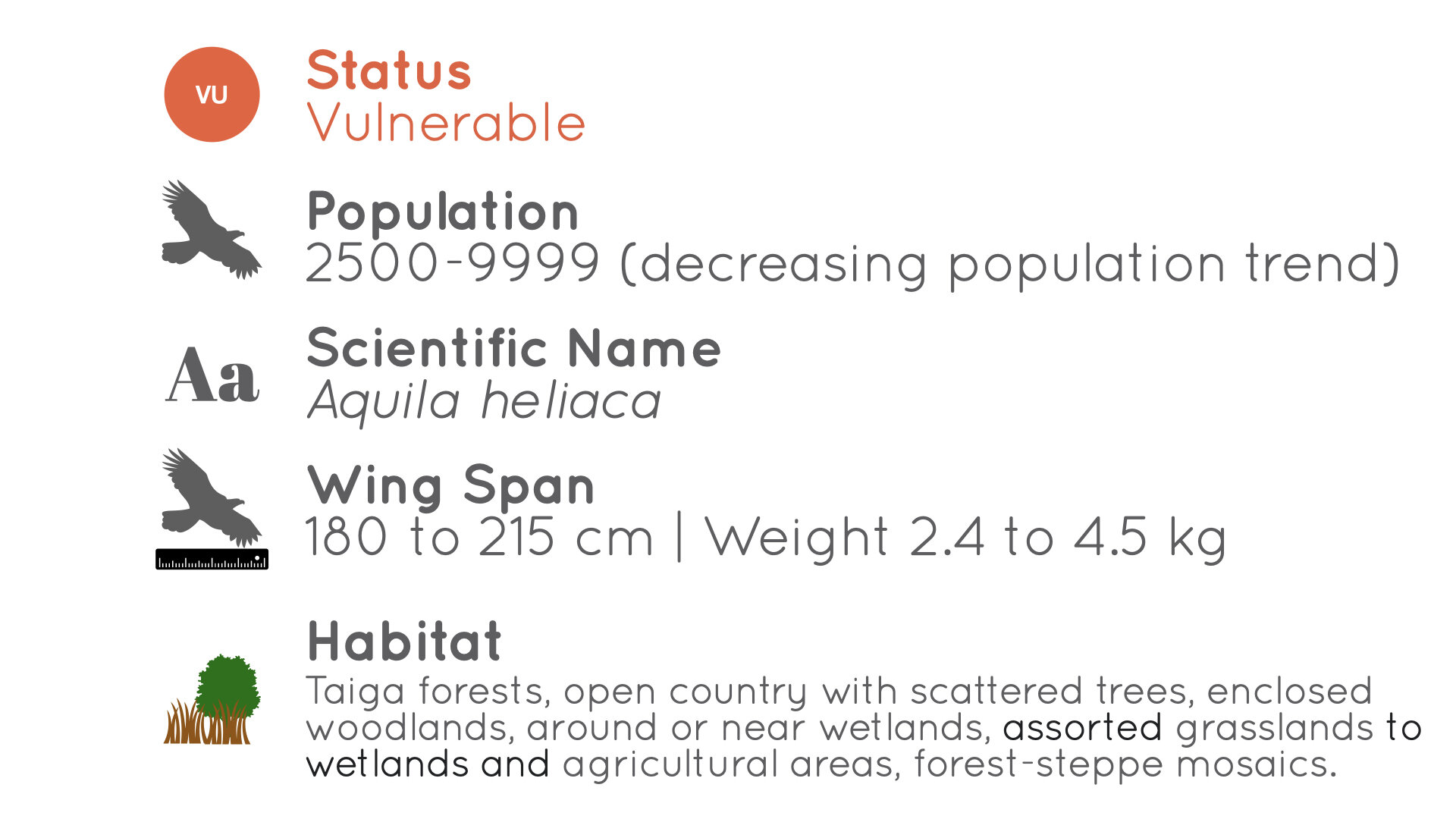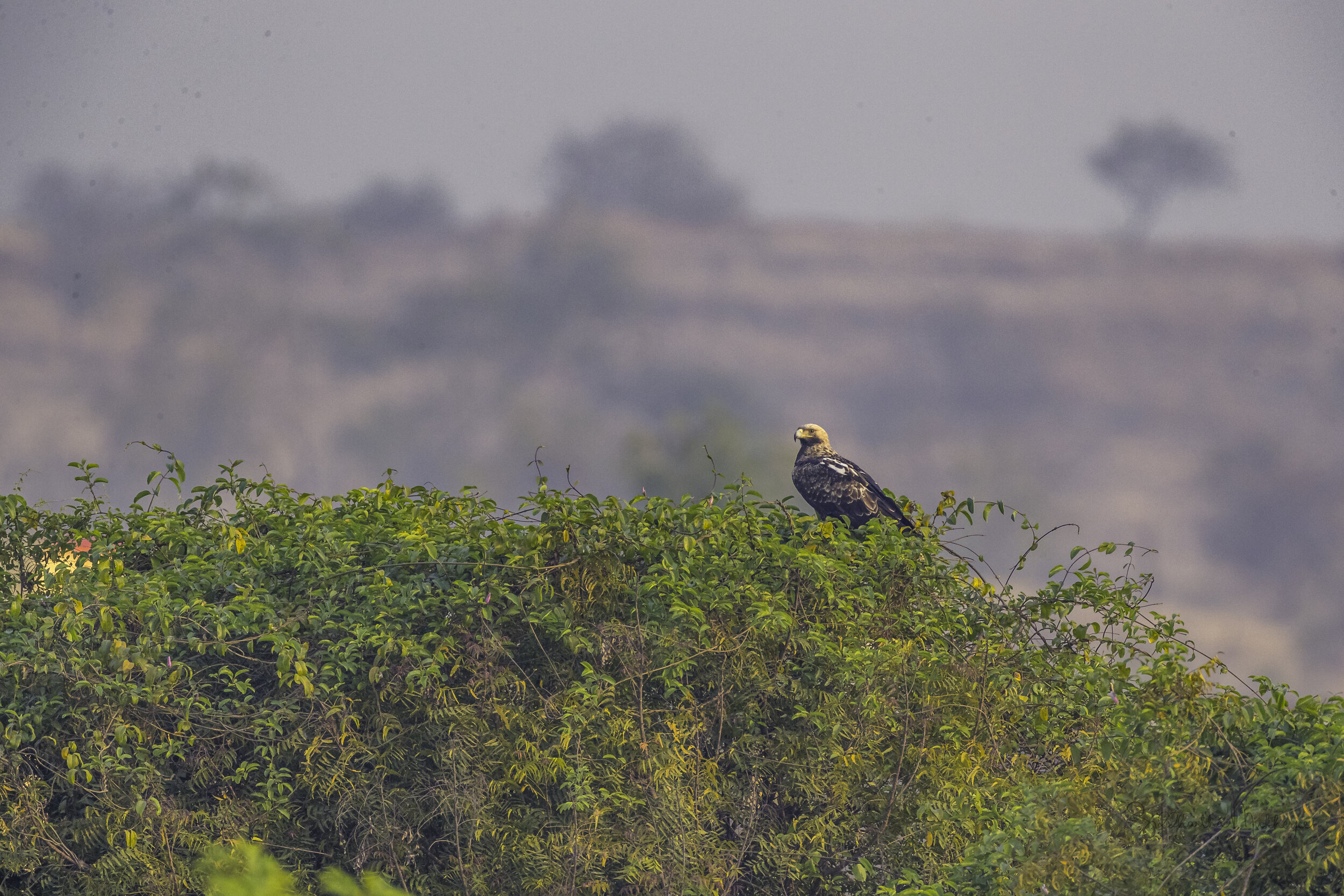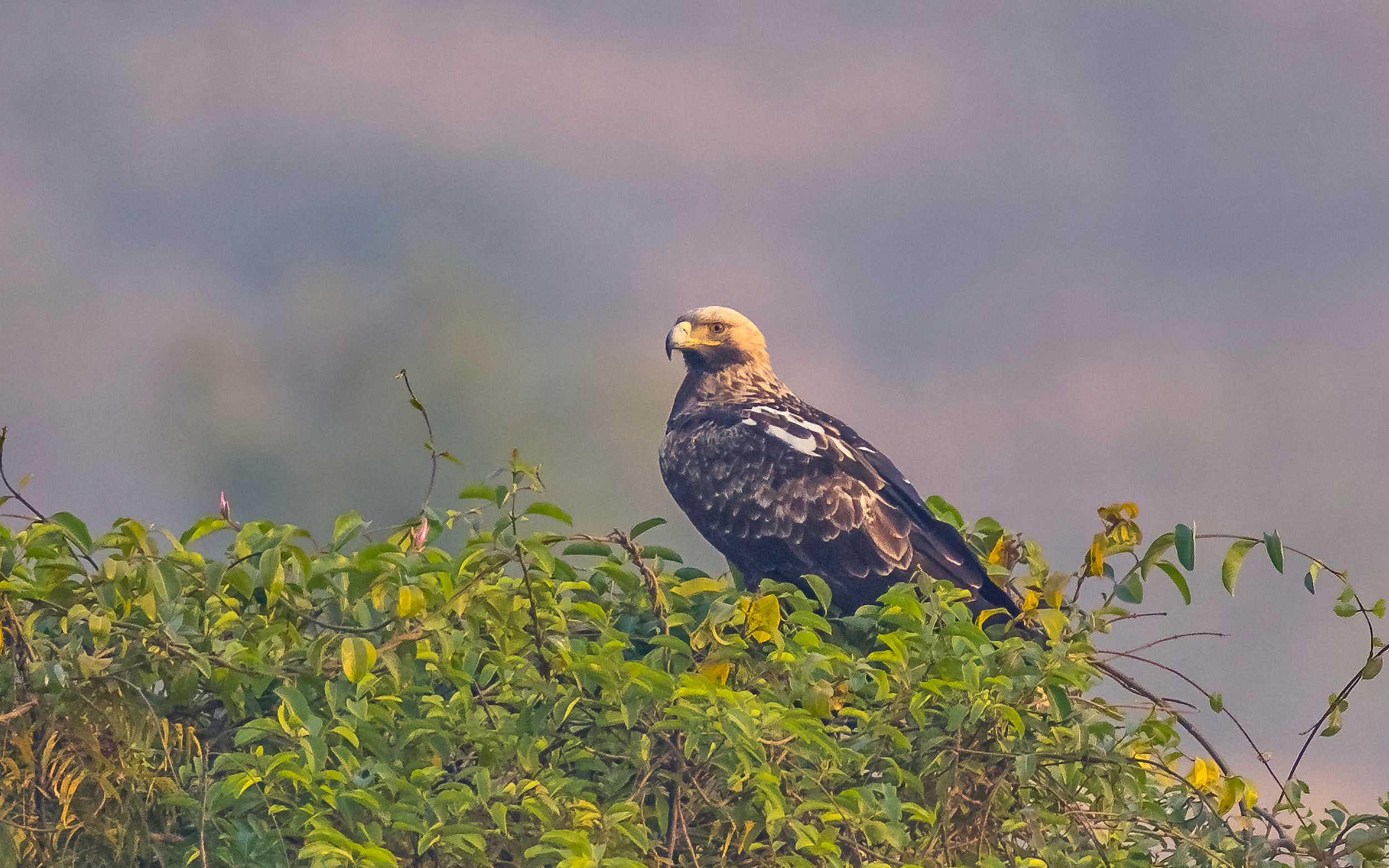Eastern Imperial Eagle
Aquila heliaca
VULNERABLE
The eagles of Kumbhargaon
The third of a three eagle series.
Bhigwan Bird Sanctuary
In this third and final chapter of the eagles of Kumbhargaon, I will talk about the rare Eastern Imperial Eagle (Aquila heliaca), which is quite a large eagle but usually falls near the middle of sizes in the large-bodied genus Aquila. With its two metre wingspan, the flight of the Eastern imperial eagle is a striking sight. Equally impressive up close, it wears a regal crown of light gold upon its long brown body. Unlike most eagles, it prefers open countryside, building its nest upon a tall tree with a clear view. But this powerful predator has become the prey. After decades of persecution by humans, the Eastern imperial eagle is now one of Europe’s rarest raptors with a small and declining global population, loss of habitat and prey. It has therefore been IUCN Red Listed as Vulnerable since 1994. I spent a couple of days in Kumbhargaon village observing and photographing these magnificent eagles and some impressive predators like the Peregrine Falcon, Pallid Harrier, Montagu’s Harrier & the extremely skittish Eurasian Marsh Harrier.
The area around Bhigwan and the River Bhima is vast and unique with diverse habitats ranging from the shallow wetland ecosystem of the Ujni backwaters to the surrounding rich farmlands and dry deciduous scrub forest with interspersed grasslands. The wide Ujni backwater wetlands, a shallow waste water reserve formed by the discharge of water from the Pune region dams like Panshet, Pawna, Khadakwasla, Varasgaon, Temghar, etc is an excellent wetland based ecosystem supporting a large variety of water birds, both endemic and migratory, and also helped with the local agriculture. Nearly 300 species of endemic and migratory birds have been recorded here. The rainfall in the Pune region decides the water level in Ujni dam. Lesser the water, the shallower it is and therefore more birds make it their home in the winter.
As the photographs below illustrate, surrounding this lush ecosystem are the rich grasslands and fertile farms home to an equally impressive list of birds, mammals and reptiles like the Indian courser, chestnut-bellied sandgrouse, blue-cheeked bee-eater, grey francolin, woolly-necked stork, and demoiselle cranes. The Indian chameleon is often seen here and after dark, creatures of the night like the leopard gecko and termite hill gecko are out and about. Although rare, the common sand boa, rat snake, and Russell’s viper are also spotted. The open areas around the villages host mammals like the black-naped hare, jungle cat, golden jackal, and Indian grey mongoose. The Asian palm civet can also be seen, especially at night. The extensive grasslands protect many mammals like the Chinkara, Hyena, Wolf and Indian fox. It is also popular for grassland birds and the birds of prey, including the Steppe Eagle and the rare Eastern Imperial Eagle. While largely unnoticed, frogs, toads, damselflies, dragonflies, beetles, and scorpions also inhabit the area. A study published by the Zoological Survey of India in 2002 reported 54 species of fish.
Apart from the grasslands, specifically for the migratory water birds, there are two areas where one can observe:
the Diksal area &
the Kumbharwadi area.
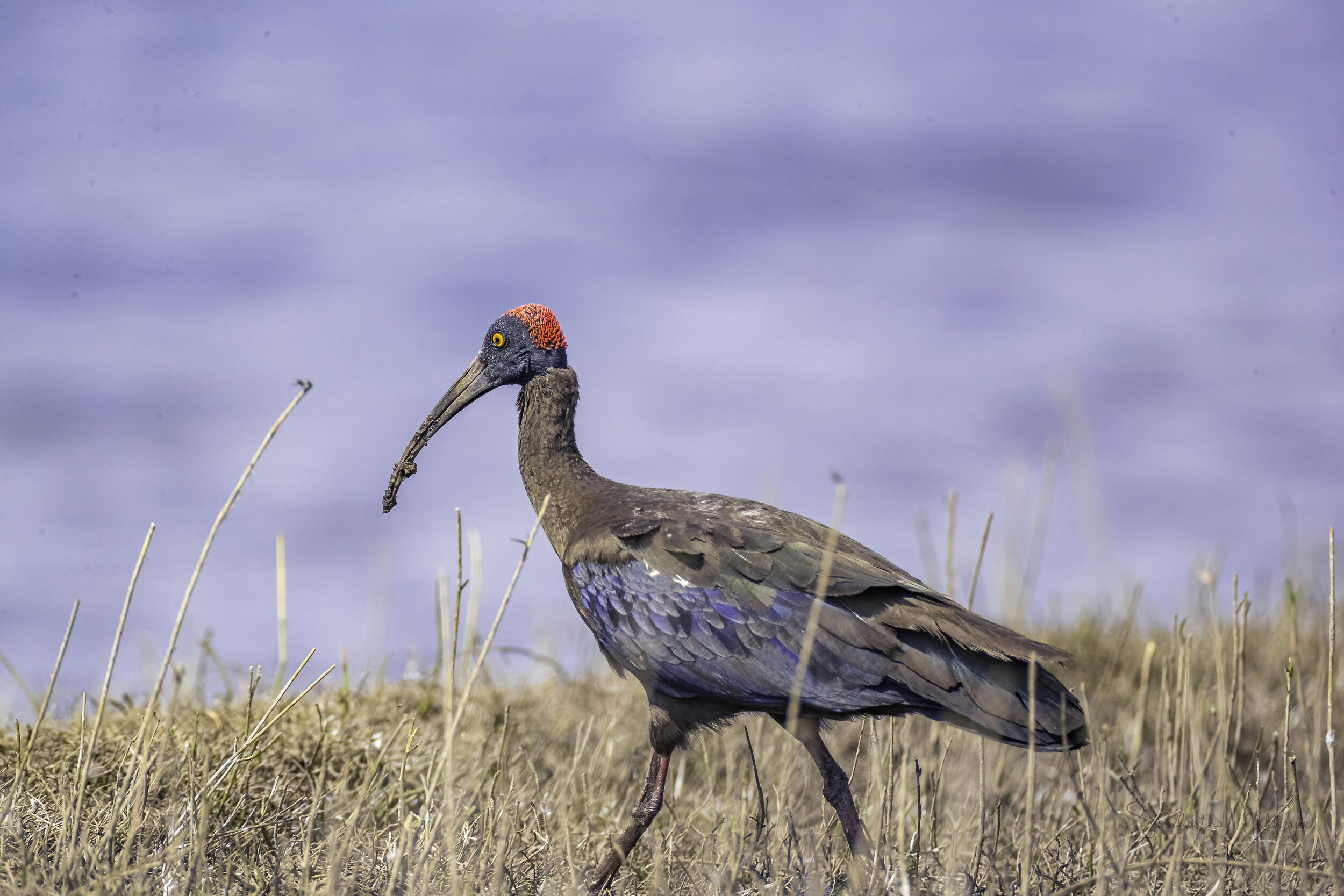
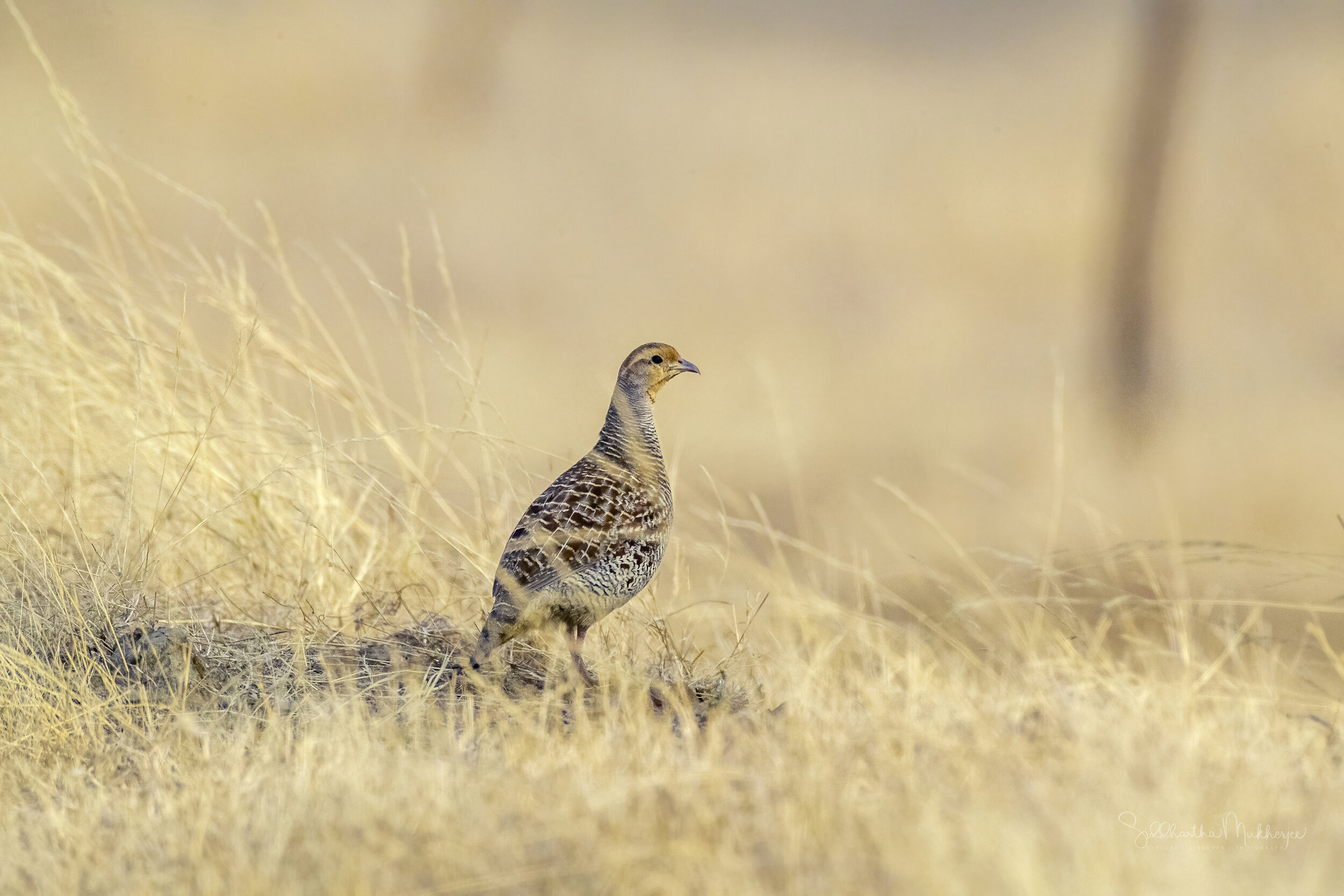
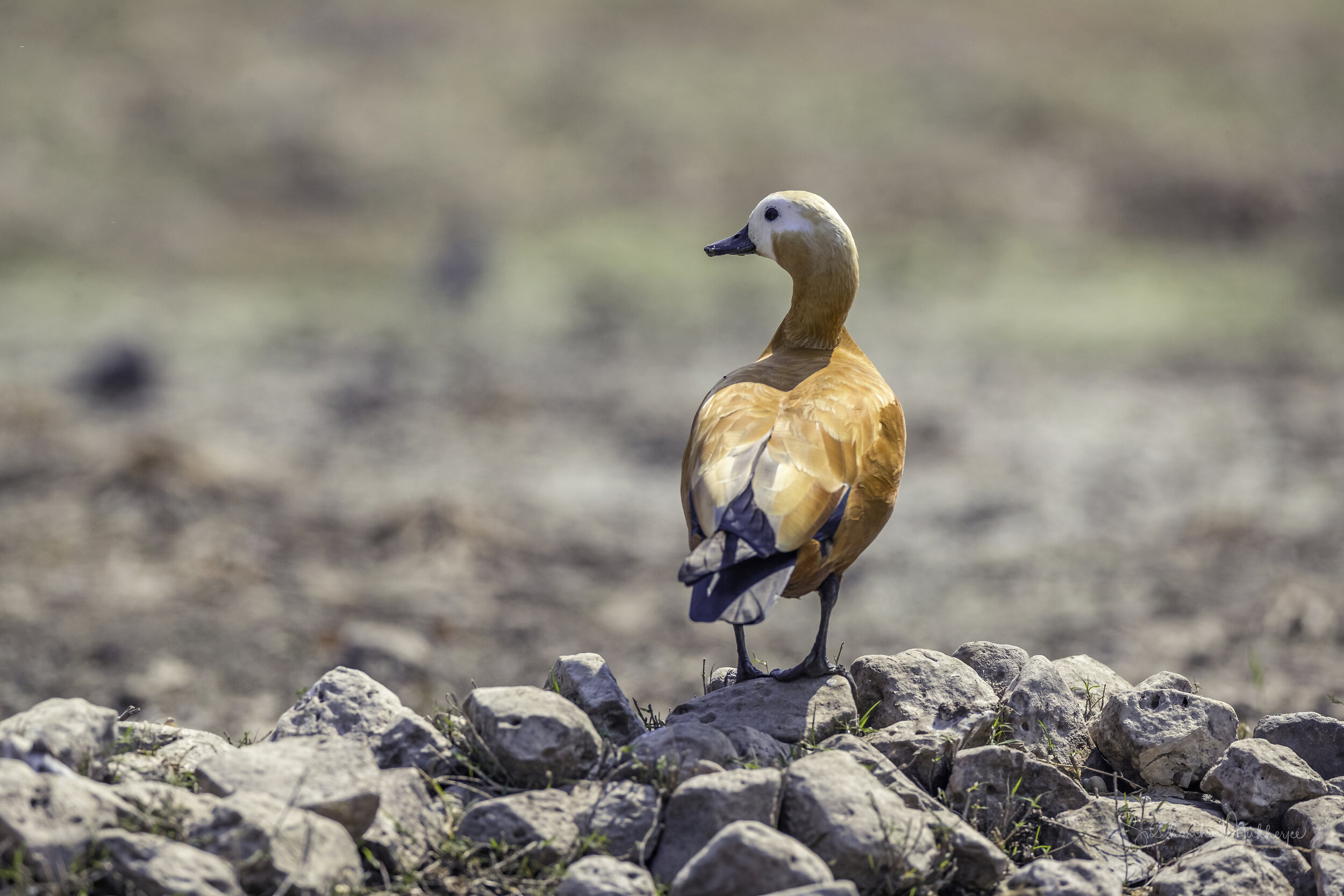
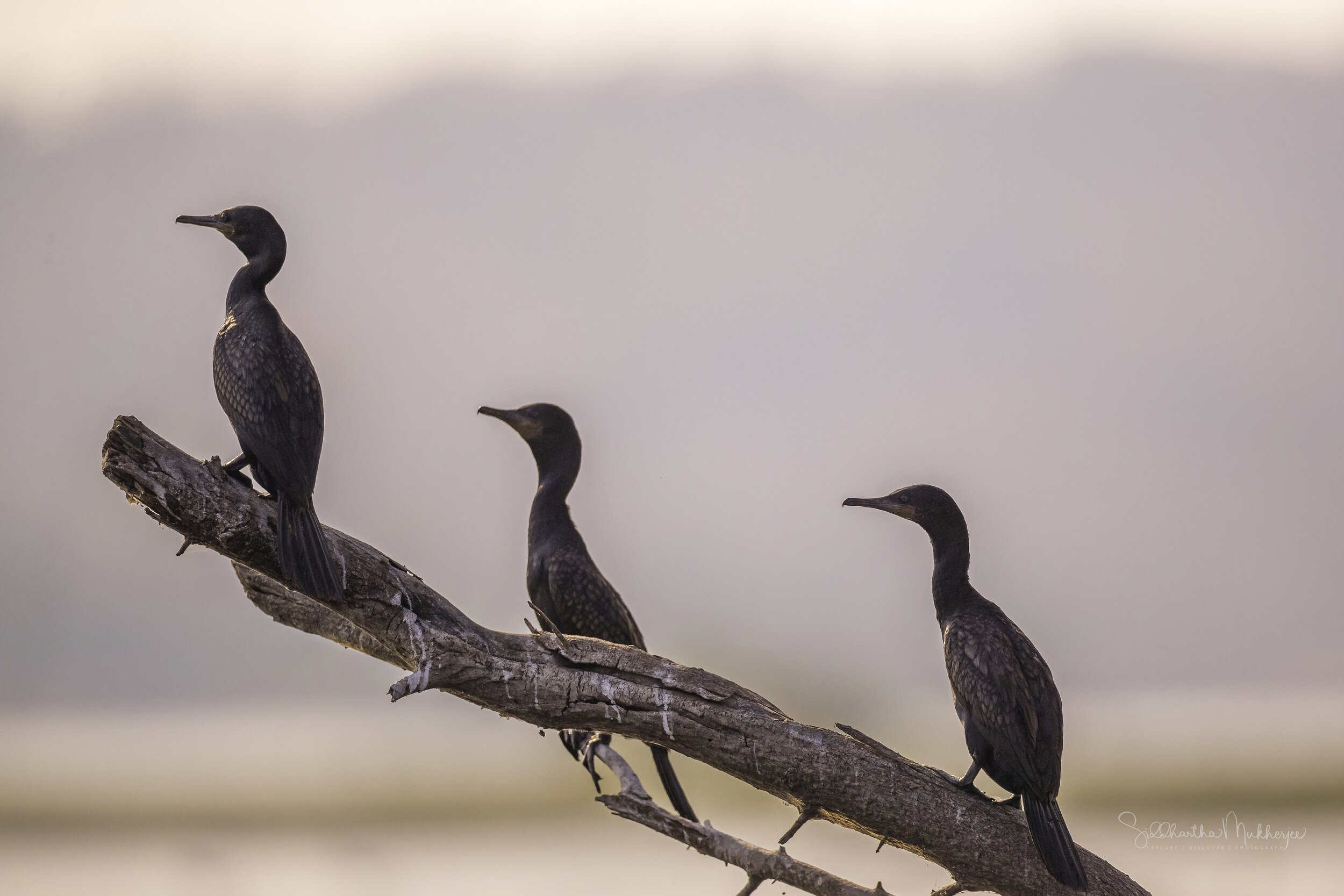
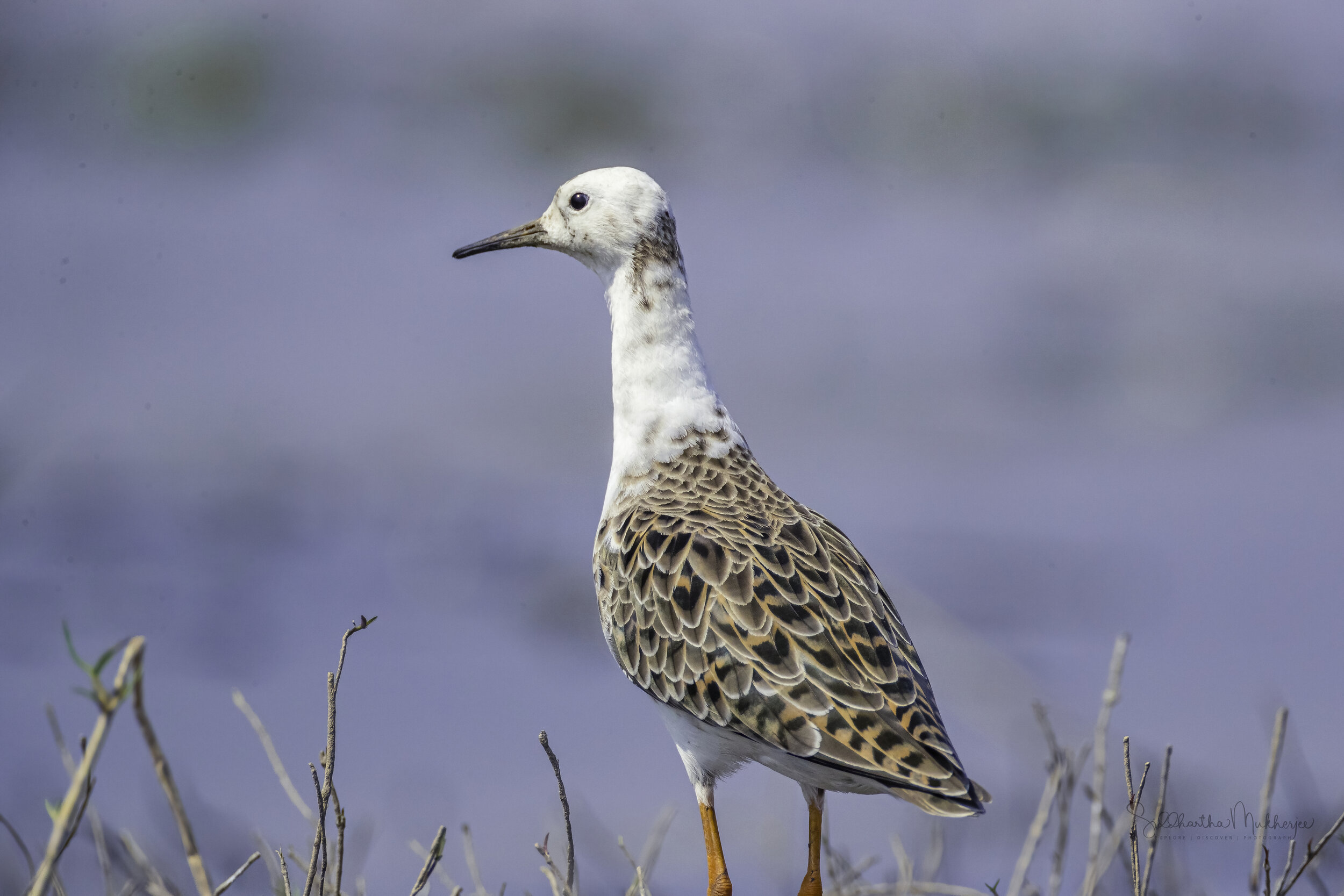

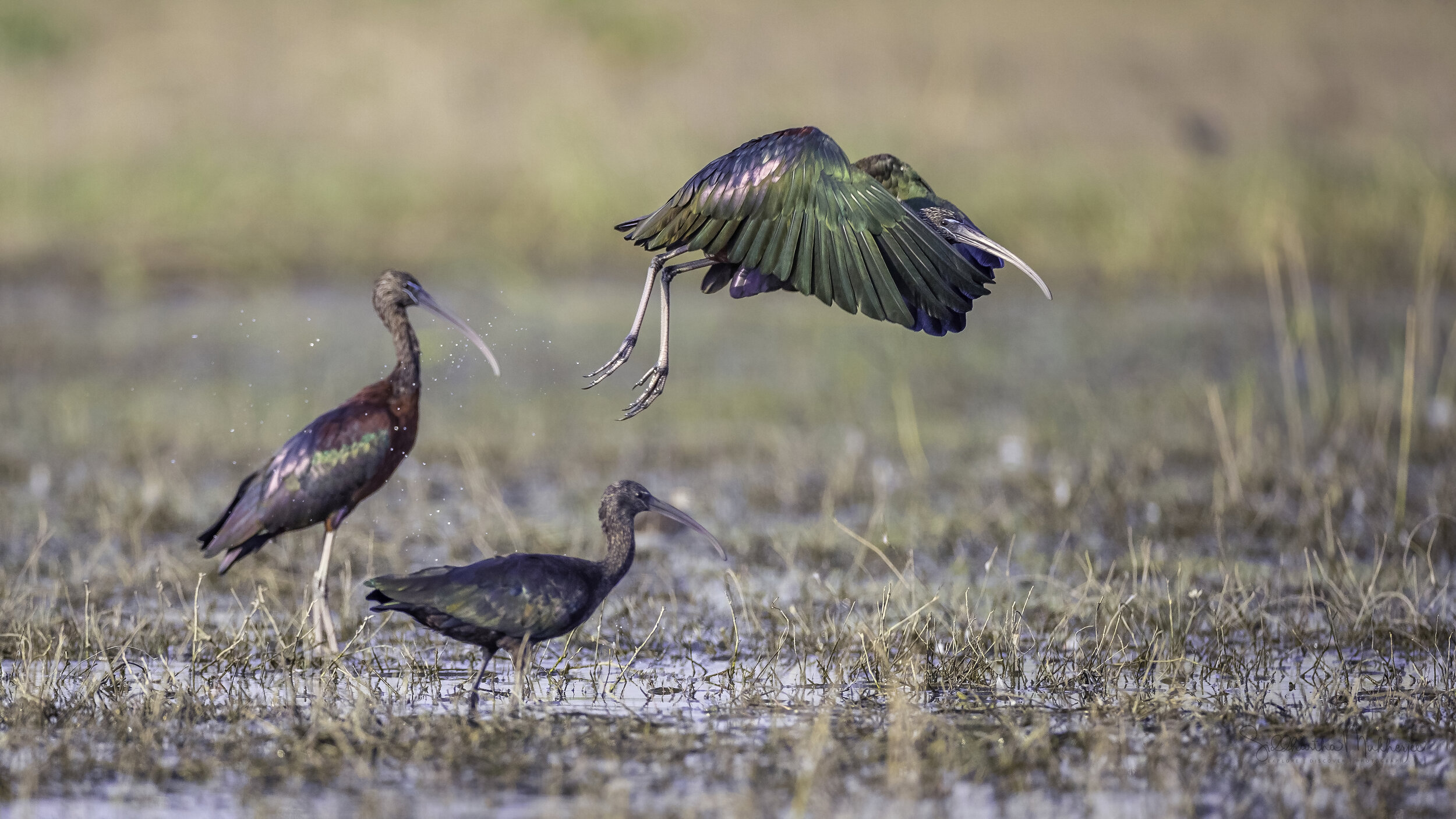
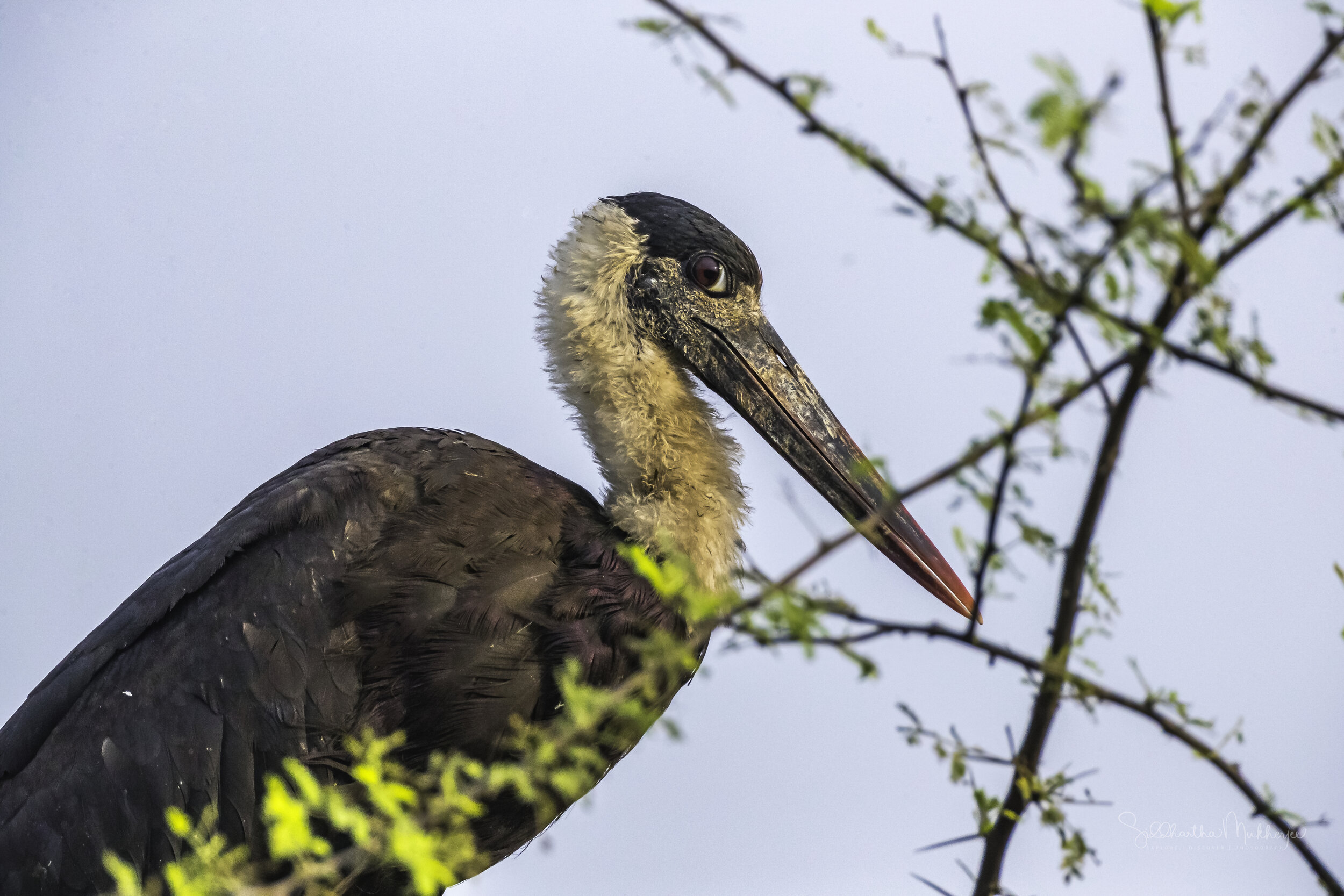
During my time here we were hosted by and had the expert help of Sandip Nagare and his team of knowledgeable guides from the Agnipankha Bird Watcher group, especially Ganesh Bhoi, who went out of their way to ensure we had fantastic opportunities to explore, discover, observe & photograph over 82 species of birds and wildlife including some rare ones. We stayed at Sandip’s homestay of the same name and had the added pleasure of indulging in delectable home cooked food.
With that as the prelude I have this blog as the final chapter of a three part series on the eagles of Kumbhargaon starting with the endangered Steppe Eagle and the vulnerable Greater Spotted Eagle.
‡‡‡‡‡
The Eastern Imperial Eagle
The Eastern Imperial eagle (Aquila heliaca) is a large bird of prey that breeds in southeastern Europe and extensively through West and Central Asia. Very similar to the Greater Spotted eagle, most populations are migratory and winter in northeastern Africa, the Middle East and South and East Asia. Like all eagles, the eastern imperial eagle is a member of the family Accipitridae. Furthermore, its well feathered legs mark it as a member of the subfamily Aquilinae. It is a very large eagle with a dark-brown body contrasting with a pale head and nape. Similar to the Golden Eagle but with a shorter tail and white shoulders that can be hard to spot. The underwings are dark with low contrast. Juveniles are strikingly different, sandy brown above with white streaks and a pale rump contrasting with dark tail and dark wingtips. Uncommon, breeding in forested areas intermixed with steppes and agricultural areas, where often seen perched on pylons.
Eastern Imperial Eagle Range
The eastern imperial bears a resemblance to the other members of the genus Aquila but it is usually the darkest species in its range. This is an opportunistic predator that mostly selects smallish mammals as prey but also a fairly large proportion of birds, reptile and other prey types, including carrion. Compared to other Aquila eagles, it has a strong preference for the interface of tall woods with plains and other open, relatively flat habitats. Normally, nests are located in large, mature trees and the parents raise around one or two fledglings. The global population is small and declining due to persecution, loss of habitat and prey. It has therefore been IUCN Red Listed as Vulnerable since 1994.
It is found as far west as east-central and southeastern Europe. The species distribution continues across central Russia, where it is found through most of the Central Federal District, essentially all of the North Caucasian Federal District, most of the Volga and Ural Federal Districts (excluding the northern parts), and the southern part of Siberia past Lake Baikal to the Transbaikalia in the landlocked southwest of the Russian Far East. Out of Russia, their breeding extends south to mostly the northern portions of the following nations: Georgia, Armenia, Azerbaijan, Turkmenistan, Uzbekistan, much of Kazakhstan, northwestern China and northern Mongolia. Isolated populations also persist in northwestern, central and eastern Turkey, Cyprus, and northern Iran. As a breeding species, they are probably extirpated from Afghanistan and Pakistan.
A flight for Survival
The Eastern Imperial eagle can migrate over huge distances, covering 8000 km in a few short weeks. While most populations breeding in Eastern Europe winter in the Middle East or Africa, not all migrate. Central European populations (in Hungary, Slovakia, Austria, Czech Republic) are mostly resident, though some younger birds head to the Balkans, Africa, and even down to central India for winter. Migratory movements occur during fall any time from September to November and in spring anytime from February to May, shifting earlier in the fall and later in spring the farther north that the eagles breed. The imperial eagles that breed around Lake Baikal, will generally migrate to south Asia. Moderate to quite low numbers are usually noted of this species at migration sites in the Himalayas. The eastern imperial eagle winters fairly broadly in the Indian subcontinent, from eastern Pakistan, eastward through southern Nepal to Bangladesh and down as far south as the states of central India.
But nowhere is safe for this magnificent species. Sadly, like many large migratory birds, the Eastern Imperial eagle regularly falls victim to electric powerlines. The species is also highly sensitive to human disturbance: critical nesting and foraging areas have been lost due to the increase of intensive farming and forestry since the 1950s and even when we look back it has declined greatly through history. At one time, people of eastern Europe and adjacent parts of Russia used to admire and even revere this eagle as a "sacred bird". It was widely referred to as the "cross-bearing eagle" (because of the shape of the white spots on its wings). According to folklore, the imperial eagle was able to divert the hailstorm clouds from the area it inhabited, and it was thus able to save farmers' crops. Therefore, the monarchy of Austria-Hungary once chose the imperial eagle to be its heraldic animal. Despite the historic reverence for the species, it was not spared the negative and hostile view of all birds of prey that arose throughout Europe and its colonies in the 17th century onwards, and the resulting persecution of essentially all birds of prey, including the eastern imperial eagle. However, almost certainly the leading cause of this species' decline was the practice of felling old trees on field boundaries that were the nest sites for the eagle. Among other reasons for its decline were the depletion (both incidental and intentional) of prey species and the incidental consumption by the eagles of poison baits, left out to eliminate wolves. As with other eagles in Eurasia, the Industrial revolution allowed access to poisons and firearms, which made the killing of eagles far easier and hastened their decline. Today, dedicated conservationists and biologists are working extensively to remediate and reverse the decline of eastern imperial eagle. The species was up-listed to Vulnerable in 1994 and global protection initiatives were begun around this time.
The following are some photos of the Eastern Imperial eagle recorded at the Kumbhargaon and Bhigwan grasslands.
And then it took off!
At 1200mm and a 2m wingspan I was too close to get the entire bird in the frame and I can tell you it is HUGE!!!
The talons of a giant.
The following footage was recorded on 12th February across much of the grasslands surrounding the Kumbhargaon and Bhigwan area. It is truly an honour and privilege to be able to get close to and watch these magnificent birds of prey.
For more videos: Video Shorts
Related Posts

